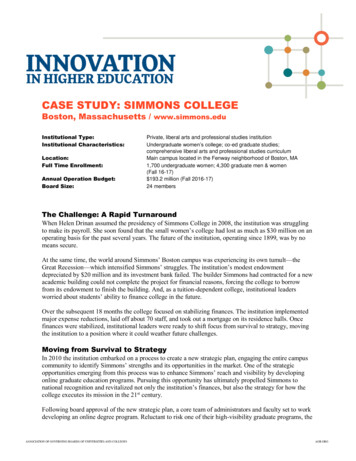
Transcription
CASE STUDY: SIMMONS COLLEGEBoston, Massachusetts / www.simmons.eduInstitutional Type:Institutional Characteristics:Location:Full Time Enrollment:Annual Operation Budget:Board Size:Private, liberal arts and professional studies institutionUndergraduate women’s college; co-ed graduate studies;comprehensive liberal arts and professional studies curriculumMain campus located in the Fenway neighborhood of Boston, MA1,700 undergraduate women; 4,300 graduate men & women(Fall 16-17) 193.2 million (Fall 2016-17)24 membersThe Challenge: A Rapid TurnaroundWhen Helen Drinan assumed the presidency of Simmons College in 2008, the institution was strugglingto make its payroll. She soon found that the small women’s college had lost as much as 30 million on anoperating basis for the past several years. The future of the institution, operating since 1899, was by nomeans secure.At the same time, the world around Simmons’ Boston campus was experiencing its own tumult—theGreat Recession—which intensified Simmons’ struggles. The institution’s modest endowmentdepreciated by 20 million and its investment bank failed. The builder Simmons had contracted for a newacademic building could not complete the project for financial reasons, forcing the college to borrowfrom its endowment to finish the building. And, as a tuition-dependent college, institutional leadersworried about students’ ability to finance college in the future.Over the subsequent 18 months the college focused on stabilizing finances. The institution implementedmajor expense reductions, laid off about 70 staff, and took out a mortgage on its residence halls. Oncefinances were stabilized, institutional leaders were ready to shift focus from survival to strategy, movingthe institution to a position where it could weather future challenges.Moving from Survival to StrategyIn 2010 the institution embarked on a process to create a new strategic plan, engaging the entire campuscommunity to identify Simmons’ strengths and its opportunities in the market. One of the strategicopportunities emerging from this process was to enhance Simmons’ reach and visibility by developingonline graduate education programs. Pursuing this opportunity has ultimately propelled Simmons tonational recognition and revitalized not only the institution’s finances, but also the strategy for how thecollege executes its mission in the 21st century.Following board approval of the new strategic plan, a core team of administrators and faculty set to workdeveloping an online degree program. Reluctant to risk one of their high-visibility graduate programs, the
2college chose to launch the online effort with a smaller healthcare administration program. This onlineprogram did not generate the interest or revenue needed to make it viable. Simmons chose not to moveforward on the program, but learned in the process that sustaining online programs required a more robusttechnology and marketing platform than the institution could afford.A New Partnership Provides a Path to SuccessA few months after the college’s first attempt, Simmons was approached by 2U, Inc.—a for-profitcompany providing online platforms for graduate programs—about its regionally well-known nursingprogram. Simmons saw in 2U the opportunity to deliver its already strong nursing program to a larger andmore geographically distributed market—using a powerful and more advanced technology platform. Theinstitution would also be able to tap into the significant marketing resources 2U would bring, allowing comarketing with other exceptional nursing programs. The partnership would add immediate clout to theSimmons online endeavor and enhance the college’s reputation on a national scale. The institutiondecided to move forward with the partnership. With the oversight of 2U and the engagement of nursingfaculty and administrators, Simmons developed and launched the program in seven months.The partnership proved a quick success—in the first year, the nursing program generated 5.4 million innew tuition revenue and has since grown to almost 2,000 students, outnumbering those enrolled inSimmons’ entire undergraduate program. Encouraged by their success, Simmons and 2U have sincedeveloped 11 other programs. In FY 2016, these programs generated 45 million in tuition revenue, andfor the FY 2017 fiscal year, Simmons’s online programs are on track to surpass the combined revenues ofits thirty on-site graduate programs. For Simmons College, developing online graduate programsrevitalized the entire college, encouraging faster evolution across all programs, providing financialstability, and allowing the institution to achieve new national visibility.Simmons College President Helen Drinan on InnovationBelow, President Drinan shares the challenges, surprises, and lessons she’s learned about innovationthroughout her tenure at Simmons.Q: What motivated Simmons College to pursue this innovation?I have described my first year at Simmons as an annus horribilis—a year of misfortune. Financially,Simmons was in a precarious position, and I regularly had people asking me if we were going to close ourdoors. It took 12 to 18 months of all-hands-on-deck to stabilize our finances, and it was a painful process.But after this period of successfully strengthening our finances, it was time to move on to strategy.Stabilizing was an important goal, but it was equally critical to start focusing on the things that wethought would really turn the organization around and secure our future.In 2010, we set our sights on a five-year horizon, and developed a comprehensive strategic plan for 2015.We had a mandate from our board that any strategic plan needed to be structured within the context of asurplus-generating budget after all interest and depreciation expense. We hired a consultant who spent thenext six months talking with faculty and staff about their aspirations for Simmons, and what they saw asour greatest strengths. It was an effort that gave everyone a voice—and a stake—in our future. Thestrategy was something we did together—from the inside out—with a relentless focus on preparingSimmons students for successful lives.By July 2011, we had a draft plan with roughly twenty-five strategies. My staff and I spent the rest of thesummer looking at market data to decide which five of these strategies Simmons should pursue, asking
3ourselves two questions: What is the market telling us? And, what do we think Simmons can do reallywell? As innovative as some of our ideas were, we knew that to be successful, it was important to stickwith our strategy and strengths. One of the reasons I believe we have been so successful with our onlinegraduate programs is because this strategy was the best match between our strengths and ouropportunities in the market.Q: What challenges did you encounter throughout the process? How did youovercome these challenges?When we first started exploring technology-based opportunities for our graduate programs, weunderstood that this initiative would have to be of the highest quality, or support from faculty and alumniwould be non-existent. This was at a time when people were still very suspicious of online education.That suspicion made fundraising difficult. I tried to raise money for this effort, and it was virtuallyimpossible.We spent about 10 to 12 months trying to create a homegrown online effort using one of our programs.Ultimately, we couldn’t develop the enrollment we needed to offset our investments. However, our failedattempt revealed some important realities. Not only did we need a better technology platform, we alsoneeded a marketing platform that exceeded the resources that we had. We had to face up to it—betweenthe technology requirement and the marketing requirements, we couldn’t do it on our own.When 2U approached Simmons about launching an online nursing program, I was nervous about how thefaculty would respond, given our internal experience. As it turned out, our nursing faculty wereremarkably open to the possibility of change and receptive to alternative ways of doing things. They sawthis as an opportunity to make a Simmons nursing degree possible for students that might not otherwisehave the opportunity to advance in their careers—nurses in rural or remote areas, nurses who aren’t ableto commute to classrooms, military nurses who might be serving our country. And they were right. Ourfaculty made this program an immediate success.We launched the Family Nurse Practitioner (MSN) program in 2013. Today we enroll close to 2,000students in this program, we have solid admissions cycles every year, and we have faculty and studentslocated in almost every state. It has grown beyond our goal-setting every single admissions period. It’sjust been a winner for us.In the years since this initial program, we have launched additional graduate programs including degreesin social work, public health, and applied behavior analysis. We also introduced MBA and healthcareMBA programs.Q: What was the board’s involvement in this innovation on your campus?The first important way the board was involved was in approving Strategy 2015, Simmons’ strategic plan.The board members were very engaged in understanding and agreeing to the five-point strategy wepresented, and in working hard to fundraise for these initiatives.The board was also incredibly involved in the decision to commit to an external partnership. WhenSimmons was considering signing a ten-year agreement with 2U, I told the board that I could not committhe institution to such an obligation without the full participation of the board. In my mind, thecommitment extended beyond the purview of the president. Signing the contract with 2U would meancommitting a large portion of our resources to this partnership, and agreeing to partner with a for-profit
4company—which, at the time, was not the first choice of partner for many academic institutions. Theboard was heavily involved in discussions about the risks of partnership and ultimately decided toapprove the agreement with 2U.Today, the board actively monitors metrics pertaining to the online strategy. The members focus moreattention on this strategy than other new initiatives because they are aware that our online programs aregrowing to the point where they represent a significant portion of our revenue.Q: What did this process teach you about developing a culture of innovation?I have worked in organizational life all of my career, and I’ve always been fascinated by the question ofculture. It’s important, it’s elusive, and it’s complicated.At Simmons, the same group of people were involved in both our failed internal online efforts and ourwork with 2U, and I think this group experienced a considerable culture change. Initially, they saw howhard it was to launch the online program ourselves and how much resistance there was towards this effort.We had tried a new idea that hadn’t worked, and nobody was blamed because of it. We simply decidedwe had to learn from this failure and move on.When we launched the online partnership, the faculty were among the first to see how successful thiscould be for Simmons. Administrative offices took a little longer. But I think they were inspired by thefaculty’s can-do attitude. It was infectious—in the best possible way. They believed in this initiative, so Ithink it was easier for all of us to believe in it. I credit the nursing faculty for creating a culture ofinnovation—the culture that says this is worth the risk and that trying a new idea is not fatal. What couldbe fatal is not trying.I also think the people who were close to the change experienced a culture shift fairly quickly. But it takesa long time for that culture change to reverberate through the whole organization—and there is alwaysresistance to overcome. A culture of innovation does not spread like a forest fire—it moves in concentriccircles, transforming the people who actually get involved in the process.Q: What other lessons did you learn, and what advice would you offer otherinstitutions pursuing innovation?An institution should look for opportunities that are natural outflows of its mission. Think about what hasbrought people back, year after year, to your institution. Are there elements of your mission that you haveunderleveraged, underutilized, and maybe forgotten? Can they be resurrected or reformatted?Since its founding, Simmons has demonstrated a practical approach to education—providing theopportunity for women to acquire an independent livelihood. This mission led to our high quality, butgeographically restricted, professional graduate programs. Expanding these programs through technologyseemed natural, and allowed us to expand our mission by increasing access to a Simmons education.
5SourcesDunagan, Alana. College Transformed: Five institutions leading the charge in innovation. Redwood City, CA: TheChristensen Institute, January 2017. loads/2017/02/Collegetransformed.pdf.Marcus, Jon. “Graduate programs have become a cash cow for struggling colleges. What does that mean forstudents?” The Hechinger Report, September 18, 2017.“Simmons College Strategy 2015.” Simmons College. May 2011.https://www.simmons.edu/ lege-Strategy-2015.pdf.Straumsheim, Carol. “Huge deal for a small school.” Inside Higher Ed, February 27, 2017.
A few months after the college's first attempt, Simmons was approached by 2U, Inc.—a for-profit company providing online platforms for graduate programs—about its regionally well-known nursing program. Simmons saw in 2U the opportunity to deliver its already strong nursing program to a larger and

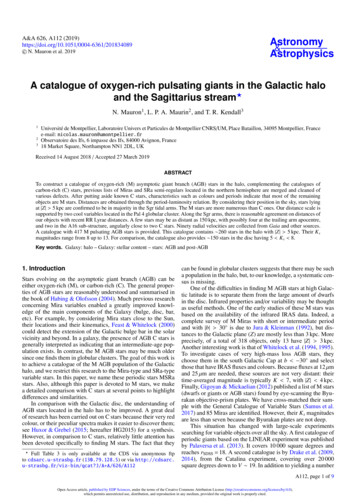
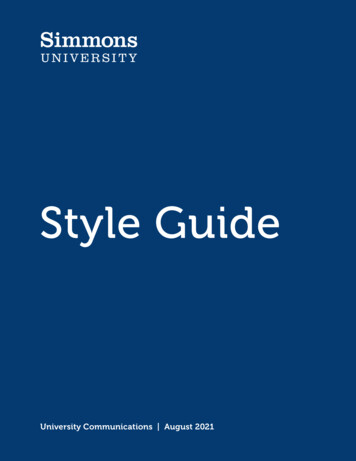

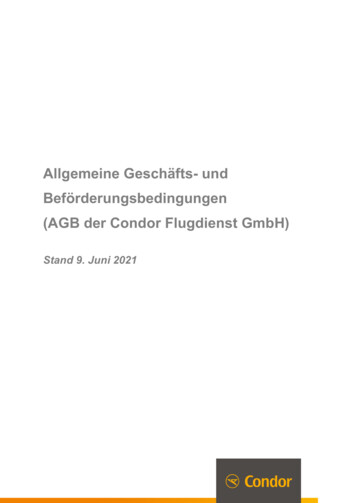
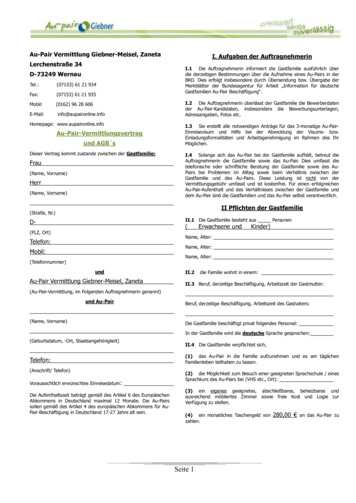
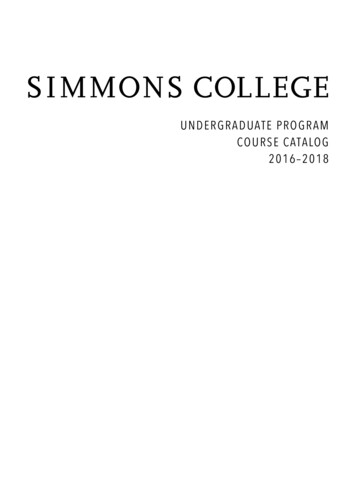
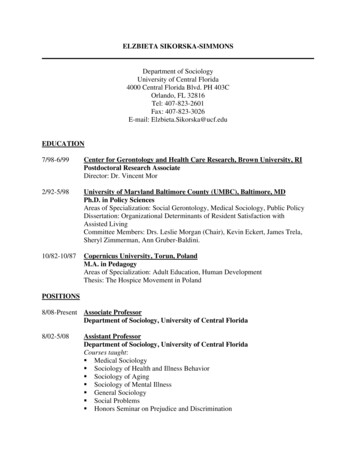

![INDEX [library.hsutx.edu]](/img/23/index.jpg)
